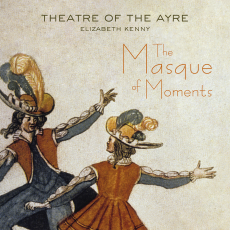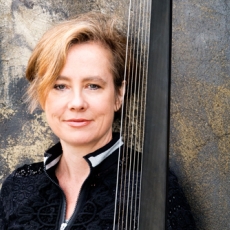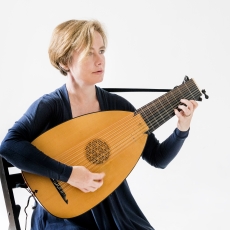Theatre of the Ayre - The Masque of Moments - MusicWeb International
The “moments” in question are differing scenes from many of the masques (I think I can count fifteen) performed in London over an extended period from c. 1605 in the reign of James 1st through the period of the court of Charles 1st.
Many of the leading composers of the time are represented, Robert Johnson (sometimes known as Shakespeare’s Lutenist) and William Lawes for example, plus some who are almost entirely forgotten, like Robert Bateman and Charles Coleman. The whole process has been designed and thought out with great skill by Elizabeth Kenny, aided and abetted by the wonderful musicianship of her supporters. We also have music from so-called “Anti-Masques”, which were a sort of comic turn in the form of interludes, hence pieces like The Bear’s Dance and the earlier, Elizabethan Earl of Essex Measure. These songs and dances were also often based on already well-known tunes. For example Jog on the footpath way found in The Winter’s Tale, Act IV, goes well with Tho’ it may seem rude with words by Ben Jonson.
But what are masques? In Shakespeare’s last plays, masques are included and break up the storyline with song and dance, as in Pericles, The Winter’s Tale and The Tempest. The move of Shakespeare’s Theatre from The Globe to the indoor Blackfriars Theatre enabled more fancy scenery and effects. To get a taste of this, go to the Sam Wanamaker Theatre next to the Southwark Globe. These plays included even more music than had been used in earlier times, and it was often supplied by the boys of St. Paul’s and other teenage performers. In the appendix to the recent edition (Arden 2013) of The Two Noble Kinsmen (1613) by Shakespeare and John Fletcher, the editor comments that the play included various Morris Dances and a piece called The Maypole. Perhaps these are the pieces on this CD.
Before and certainly after Shakespeare’s death the “Masque” grew in scope through the work of Ben Jonson, who is represented here with four songs. He played a massive role in the earlier masques. He would even have been involved with the creation of the dance steps and produced the shows himself. But even he was, partially at least, superseded by the architect Inigo Jones with his vivid stage designs especially after his working trip to Italy c. 1608. But as early as 1606 they conceived “The Masque of Beauty”. The extravagance of this entertainment, now mostly confined to court, was unbelievable and much criticised for its expense and debauchery. After Charles 1st had masques disbanded in 1625, his wife Henrietta persuaded him to restart them in 1631. They grew even more cumbersome and expensive. But for the artists and composers like Lawes and Locke they afforded an incredible creative opportunity.
So this recording gives us a chance to hear, in an attempt at chronological order, what some of this masque music—mostly songs and anti-masque music, usually mostly instrumental—might have sounded like. Care has also been taken with the instruments selected, as Elizabeth Kenny says in her beguilingly written and detailed booklet notes. Plucked sounds and strings make up her chosen orchestra—citterns, violins, violone, lutes and so on, played by the ten instrumentalists. In addition there are five singers.
The whole disc has offered this reviewer much joy, but none more so than hearing fifteen-year-old Rosanna Wicks singing Henry Lawes Sweet Echo. Originally it was written for Lady Alice Egerton, a fifteen year old pupil of Lawes. As Kenny says, Rosanna’s sound “hovers between innocence and insight”—the first time it has been publically sung by a fifteen-year-old girl since its original performance in the Comus Masque presented at Ludlow in 1634.
William Lawes was probably more talented than his brother. Sadly, his death at the battle of Chester cut short a promising career. His dialogue song from the masque Of the Inns of court is the longest track; the words are by the dramatist James Shirley (d. 1666). Other famous writers represented are the great John Milton, responsible for the Comus Masque performed at Ludlow Castle, and William Davenent, who may have been a bastard son of Shakespeare. Thomas Campion is represented both as composer and poet. His beautiful Move now with measur’d sound comes from an apparently wildly extravagant Masque for the marriage of Lord Hayes in 1607.
The Salisbury Cathedral choristers fill in for the early 17th century St. Paul’s or Chapel Royal boys. They are a real bonus, acting as the chorus in such numbers as The Inns of Court Masque, in which they tend to repeat the last line or a verse of the soloists’ section. Versatile soprano Sophie Daneman and tenor Nicholas Mulroy, counter-tenor William Purefoy and baritone Giles Underwood add to the comedy of some of the more down-to-earth songs; they can also be expressive and sensitive where needed.
The booklet is very attractively presented, with full texts and colour photos as well as the above-praised essay. This beautifully recorded disc will no doubt be one of my highlights of 2017. My advice is, as they tend to say all too often in restaurants, “enjoy”.


